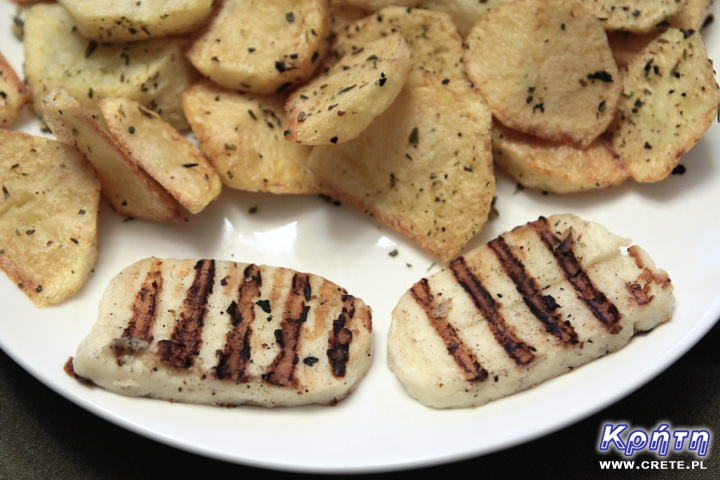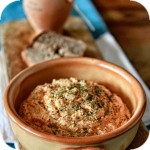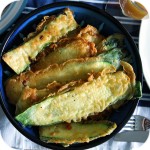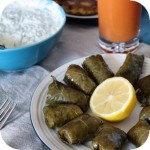
Halloumi cheese comes from Cyprus, where its average consumption per capita is 8 kg per year. It is a white, semi-hard cheese made from unpasteurised sheep's milk, from a mixture of sheep and goats, possibly with the addition of cow's milk. Halloumi taste is sometimes enriched with the addition of mint. The recipe for its production has been unchanged for centuries. A characteristic feature is a fairly elastic consistency and a high melting temperature, which makes the cheese perfectly tolerate barbecuing or frying. It is quite salty, because 3% of its weight is salt, so if we intend to use a halloumi for a dish, we do not give it anymore. Halloumi is very popular in Greece, the Middle East, Europe and the United States, but the best quality Halloumi must come from Cyprus.
Although you can also buy this cheese in our stores, however, before that it's worth to look at its label and read where it was made. This is quite important because, due to its growing popularity, some countries are trying to produce it, but not always with a good effect. After repeated tests with a clear conscience, we can only recommend Greek products because they retain their properties. Others can simply melt when trying to grill.
The preparation of grilled halloumi is simple and fast. Cut the cheese into slices approximately 1 centimeter wide and lubricate on both sides with olive oil. Warm up a cast iron grill pan until a little bit of oil placed on it starts to smoke. Then we reduce the fire a little and put the slices of cheese. We grill about 1 minute on each side. Repeat the griiling process until you see clear brown stripes on the slices.
We can serve grilled cheese with garlic bread or as an addition to vegetable dishes. Cypriots mastered the combination of halloumi with other ingredients and have dozens of dishes with this cheese. They serve it most often with vegetables or fruit, but also as an addition to pork or lamb.


Tirokafteri is a popular addition to bread or pita, which can also be obtained in a tavern as meze. It can be described as a Greek paste made of feta cheese and paprika.

We were eating this meal for the first time in Rethymno in one of the humble family taverns outside the main tourist trail. We were surprised by the slightly different taste of breadcrumbs that we wanted to recreate in our kitchen. As we have managed to establish with the friendly Greeks, it is the addition of beer that is responsible for this characteristic taste.

Dolmades is one of the most popular Greek meat dishes. It occurs both in the vegetarian version and with meat. Young grape leaves are needed to prepare them. And it is in the leaves that the key to success lies. They must be young and very delicate. The best and the most delicate ones are collected around May. However, if you do not have the opportunity to collect fresh leaves, you can use ready-made leaves from the lagoon. However, the effect will be better if you use fresh leaves.
Komentarze
komentarz z
Pod koniec maja sprawdzę to u źródła ;)
komentarz z
Cypr?
komentarz z
Yes :)
komentarz z
Cypryjczycy przygotowują halloumi na mnóstwo różnych sposobów, więc testuj wszystko :)
komentarz z
Odkładałem Cypr już od paru lat i w koncu zdecydowałem ... tylko na Kretę urlopu zabraknie :(
komentarz z
My także mamy w planach Cypr, póki co jednak Kreta prawie zawsze wygrywa.
komentarz z
To tak jak u nas ;)
Nawet jak mieliśmy (chyba 2 lata temu) pojechać na Kefalonie, to "zrobili" tam trzęsienie ziemii i musieliśmy zamienić na Kretę :D
komentarz z
Mniam
komentarz z
Ser rewelacja! Szkoda że nie udało mi się przywieźć więcej tego serka, bo ograniczały mnie kg!
komentarz z
W Polsce można kupić cypryjskie halloumi w sieci sklepów Kuchnie Świata i bywa też w Makro. Są też halloumi produkcji niemieckiej ale tych nie polecamy.
komentarz z
Mieliśmy okazję spróbować będąc w zeszłym roku na Cyprze. Super jedzonko. Pozdrawiam RM
Wypełnij poniższy formularz aby dodać komentarz
lub kliknij w poniższy link aby skorzystać z możliwosci komentowania przez facebooka:
https://www.facebook.com/crete.poland/posts/10153366652592551